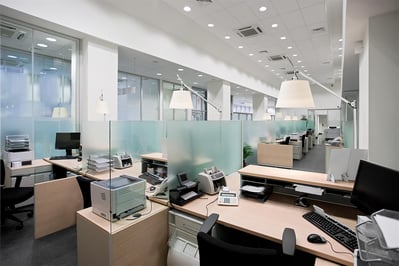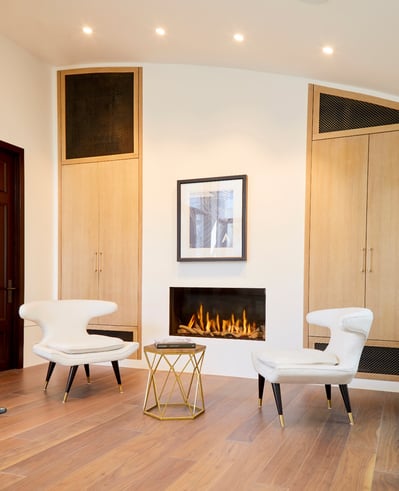The average person spends around half of their waking life at work. Considering the sheer number of hours most of us spend at work each week, workplace atmosphere matters—a lot.
Architects and interior designers are challenged with creating good working environments that are not only innovative and edgy, but also functional and comfortable for employees.
 A workspace that’s noisy, poorly lit, or allows for constant interruptions can quickly lead to exhaustion and burnout. One that’s well-designed, on the other hand, can promote mental and physical well-being and boost productivity—and that’s good for workers and employers.
A workspace that’s noisy, poorly lit, or allows for constant interruptions can quickly lead to exhaustion and burnout. One that’s well-designed, on the other hand, can promote mental and physical well-being and boost productivity—and that’s good for workers and employers.
What Hospitals Teach Us About the Health Impacts of Poor Design
Conventionally designed hospitals provide a good example of what not to do when it comes to designing a building that promotes health and well-being. Most hospitals are still designed with sound-reflecting hard surfaces, harsh lighting, and sterile furnishings.
These features have been shown to stress out patients, elevate patients’ blood pressure and heart rate, and hamper healing—an unfortunate irony for facilities that are supposed to promote health and wellness.
Many workplaces make the same mistakes as hospitals. It’s no secret that healthy employees are happier and more productive—it’s why employers are increasingly investing in workplace wellness programs.

Yet, the modern workplace is often noisy, distracting, and stressful. The ever-popular open office design that helps fosters open communication and collaboration has also created challenges for workers.
For example, researchers conducted a survey of employees at a top architectural firm with an open office floor plan. The survey found that reduced privacy and increased noise and interruptions from the open layout led to increased irritability, problems with concentration, and worse performance outcomes among employees. Other studies have had similar findings.
Designing Workplaces That Promote Well-Being
So, what are some ways architects and designers can create workspaces where employees thrive?
- Install good lighting. Light directly impacts workplace performance. One study found a strong relationship between exposure to daylight at work (g., through windows) and workers’ sleep at night. Bring in natural light as much as possible, by adding skylights, for example. In areas where it’s not possible, install “daylight”-rated lights, which mimic natural light and help improve alertness, concentration, mood, and performance. Bright light also reduces irritability, evening fatigue, and eye discomfort.
- Bring nature in. There’s ample evidence that contact with nature (even just a few minutes a day) can reduce stress and boost positive feelings. Bring nature into the workplace—with window views, plants and flowers, fountains, aquariums, a contemporary fireplace, or even nature-themed art (photographic art of natural scenes and landscapes are a good choice).
 Add color. Designers and architects are intimately familiar with how color impacts mood and behavior. Green is a known mood-enhancing color. Incorporate green design features and accents where possible or bring in fresh plants and flowers—and distribute them liberally.
Add color. Designers and architects are intimately familiar with how color impacts mood and behavior. Green is a known mood-enhancing color. Incorporate green design features and accents where possible or bring in fresh plants and flowers—and distribute them liberally.
Create private spaces. People have different tolerance levels for noise and distractions, but everyone is affected to some extent. If you have an open office floor plan, it’s especially important to create quiet spaces for workers to recharge and de-stress. Quiet spaces where employees can have private conversations, make calls to important clients, or just momentarily get away from noise and distractions are vital.
Revitalize Your Office Space With a Mood-Enhancing Fireplace
Humans have been using fire for hundreds of thousands of years. No surprise, then, that the soothing sight of a fireplace is an effective stress reliever.
Create a respite for employees by installing a fireplace in a lounge area or reading room. The versatile gas fireplaces in Ortal’s collection can be installed in virtually any space. Incorporate them into corners, inside dividing walls, as freestanding gas fireplace units, and many other configurations.
Modern fireplace design and cutting-edge technology—it’s why Ortal is the preferred choice among designers and architects around the world. View our full catalog of fireplace styles and browse our gallery for inspiration on your next project.

